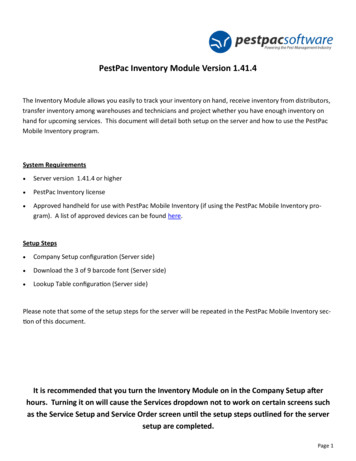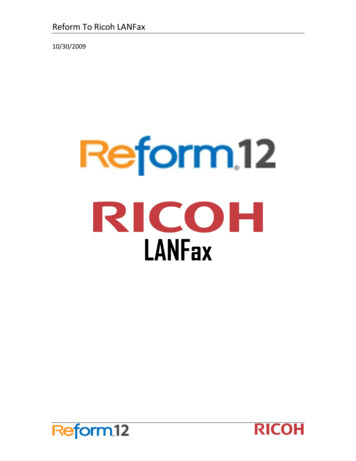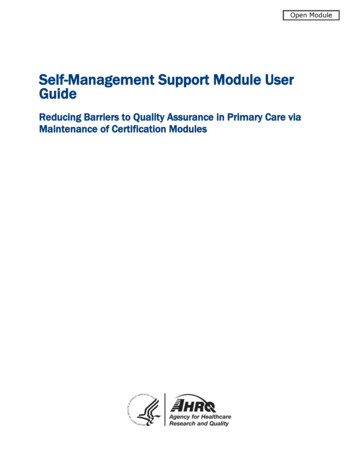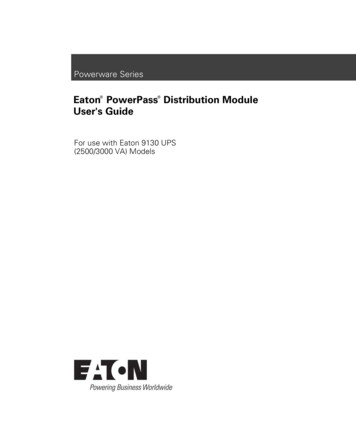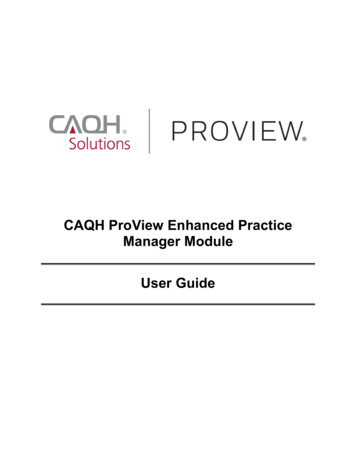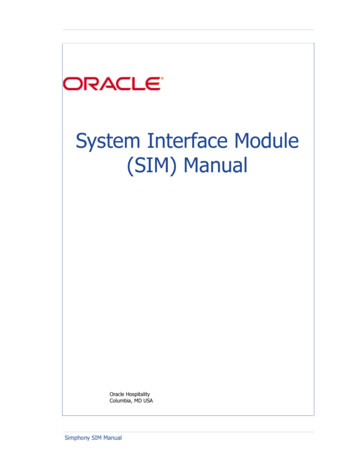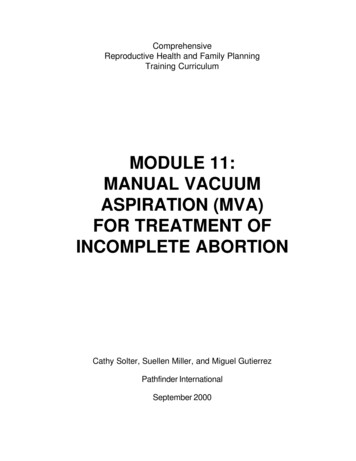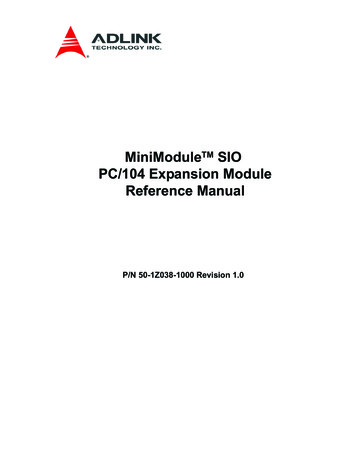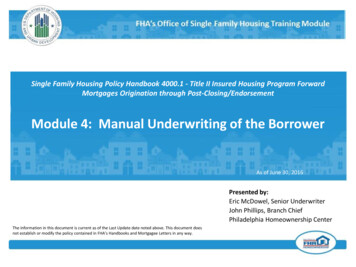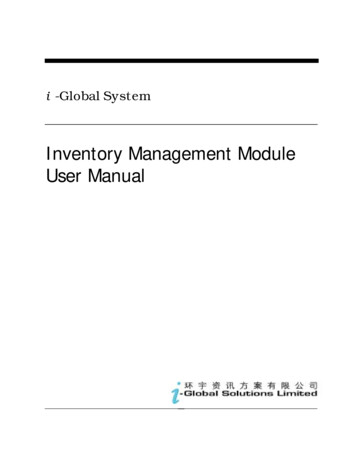
Transcription
i -Global SystemInventory Management ModuleUser Manual
i-Global SystemCopyright 2004, i-Global Solutions Limited. All rights reserved.Inventory Management Module User Manual -- Version: 1.01This product and related documentation are protected by copyright and are distributedunder licenses restricting their use, copying, distribution, and de-compilation. No partof this product or related documentation may be reproduced in any form by any meanswithout prior written authorization of i-Global Solutions Limited.Trademarki-Global System is a registered trademark of i-Global Solutions Limited.Other product names mentioned in this manual may be a trademark or registeredtrademarks of their respective companies and are hereby acknowledged.Printed in Hong Kong.
ContentsPageAbout This Manual . iConventions Used in This Manual . i123System Overview . 1-11.1Introduction. 1-11.2Inventory Management Features. 1-11.3Terminology . 1-11.4System Login . 1-11.5Workspace Components . 1-11.6System Logout . 1-11.7Operation Modes of the System . 1-1Master File Setup2. 2-12.1Warehouse Master . 2-12.2Transaction Code Master . 2-12.3Location Master . 2-12.4Reason Code Master . 2-12.5Warehouse category Master . 2-12.6Item Master . 2-1Receive Transaction. 3-13.1Purchase Order Receiving. 3-13.2Batch Purchase Order Receiving. 3-13.3Miscellaneous In . 3-13.4Incoming Quality Control Process . 3-13.5Internal Transfer . 3-13.6MRB In . 3-13.7MRB Out. 3-13.8Work Order Material Issue . 3-1i
3.9Work Order Material Kit Issue. 3-13.10Work Order Material Return . 3-13.11Work Order Finished Goods Return. 3-13.12Q/A In. 3-13.13Process Transaction. 3-13.14Material Requisition Issue. 3-13.15Return To Vendor . 3-13.16Delivery Note. 3-13.17Miscellaneous Out. 3-13.18Inventory Adjustment. 3-13.19Transaction Cut-Off . 3-14Physical Inventory Take. 4-15Enquiry. 5-15.1Item Master Enquiry . 5-15.2Inventory Trans. Enquiry . 5-15.3Multi-Tree Item (Customer-Item) Enquiry. 5-16Report . 6-17Number Prefix. 7-18General Ledger Interface . 8-1ii
About This ManualThis manual has been developed to guide you through the Inventory Management Module of i-GlobalSystem with comprehensive, step-by-step method of instruction. This manual was designed in amodular format for the purpose of grouping major topics, and placing emphasis on key productfeatures.This manual is organized as follows:SectionDescriptionChapter 1System Overview: Overviews on the Inventory Management Module,highlights features and defines terminology.Chapter 2Master File Setup: Describes procedures how to set up the masterrecords.Chapter 3Material Transaction: Guides to create and maintain MaterialTransaction.Chapter 4Physical Take Transaction Code: Provides operation details to run theannual physical stock take process.Chapter 5Enquiry: Depicts how to enquire necessary information from the system.Chapter 6Report: Gives both transactional and management stock reportgeneration for control and management purposes.Chapter 7Number Prefix: Defines the document Number Prefix for better control.Chapter 8G/L Interface: Posts account data into General Ledger.iii
Conventions Used in This ManualThe following typeface conventions are used throughout this manual:BoldBold text indicates an option to choose or text to type. Itusually appears in numbered steps.ItalicsWords are italicized for emphasis or to draw your attention toa new term.Action Æ Option NameWhenever you see a reference to a menu option, the option isidentified using the following notation:Menu Name Æ Option NameFor example, “ Type Æ Create”iv
Icon FunctionIcon NameSymbolFunctionActive TaskTo show all active tasks opened in the system,current task is always on the top.Add NewTo add a new entry.ApprovalTo approve a transaction process.CancelTo end current process.CancelTo cancel an entry.ConfirmTo confirm an entry.DeleteTo delete a record.Delete AllTo delete all records.EnquiryTo begin an enquiry process.ExportTo export data into a specific format file.NextTo next record.Pop UpTo display the selection list.PreviewTo preview a retrieved data/report.ProcessTo begin a process.RetrieveTo retrieve a selected record.SubmitTo submit an entry.UpdateTo update/amend a record.v
Inventory Management Module1Master File SetupSystem Overview1.1 IntroductionInventoryInventory is any stock at any stage in the supply chain. This includes finishedgoods, subassemblies, components, and raw materials. Inventory has an intrinsicvalue and incorporates added value.The investment in inventory typicallyrepresents one of the largest single areas of capital in a business, often more than25 percent of total assets.Inventory should be an asset. However, if inventory is not properly managed, itcan be a liability. Inventory Management provides the opportunity to save moneyby controlling inventory with informed planning and production.1-1
Inventory Management ModuleMaster File SetupWarehouseA warehouse is a grouping of inventory locations or stocking positions. Awarehouse may represent a physical space or a logical condition for inventory.You define warehouses in the Warehouse Master.Multiple Warehousesi-Global System allows for as many warehouses as needed for any item.Eachwarehouse may be designated as allocatable (allowed for order processing), ornon-nettable (not used in the MRP netting logic). This allows businesses to set upstaging areas and quarantined warehouses. The warehouses can be either physicalor logical warehouses. Physical warehouses and locations represent inventory at rest.They describe the stock’s geographic location.Examples include astockroom, warehouse, or storage facility. Physical warehouses can alsodescribe consignment inventory and floor stock. Logical warehouses and locations represent inventory in motion.They describe the condition of inventory, such as work-in-process,goods-in-transit, and goods in inspection.LocationA location is a physical or logical stocking position or area within awarehouse.Examples of physical areas are bins, rows, or floor locations.Examples of logical areas are quarantine, rework, and goods-in-transit.Multiple Locationsi-Global System allows for as many inventory locations as desired for any item.1-2
Inventory Management ModuleMaster File SetupLotA lot is a particular batch of an item such as pharmaceuticals and otherperishables. You define items as lot-controlled in the Item Master.To maintain lot-controlled items, you must input a lot number. Inquiry programsdisplay the lot numbers. Transactions requiring a lot number entry are defined onthe Transaction Maintenance program.When these transaction types are used fornon lot-controlled items, the lot number validation is by-passed.Lot Inventory Detail prints a lot inventory detail report.1-3
Inventory Management ModuleMaster File Setup1.2 Inventory Management FeaturesThese features in i-Global System Inventory Management Module enhance your overallproduction or distribution performance:ABC Classification Inventory Control, CycleCounting, Physical Inventory, Alternate Items and multiple Item Unit of Measure.ABC ClassificationAn ABC analysis separates inventory items into three groups according to theirannual usage and cost.ATypically, 80% of your inventory value is reflected in 20% of your totalinventory. These are known as A items.B15% of your inventory value is reflected in 30% of your total inventory.These are known as B itemsC5% of your inventory value is reflected in 50% of your total inventory. Theseare known as C items.An ABC analysis identifies items having the greatest impact on inventoryperformance when you implement improved inventory control.For example, acareful analysis of the order quantity and timing decisions for A items provides alarger benefit and possible improvement in inventory performance than do similarefforts on C items.You assign an ABC code to each item, which supports ABC usage reporting andre-designation.1-4
Inventory Management ModuleMaster File SetupABC Usage Reporting and Re-designation You define percentages for A, B, and C items in the System Parameters. Items are ranked by year-to-date (YTD) usage value. YTD usage value equals YTD usage units multiplied by the standard unitcost. Total YTD usage value equals the sum of YTD usage values for all items. Cumulative YTD usage value equals the sum of YTD usage value (thisand higher ranking items). Cumulative Percentage Price YTD Usage Dollars 100 Total YTD Usage Dollars Rankings and cumulative price percentages indicate which items areredesignated A, B, and C. New ABC designations can be stored in the ItemMaster file (IIM). An optional feature of the ABC code control is the cycle count selectionprocess.Cycle CountingInventory Management requires inventory values in the computer system to equalinventory values in the warehouse. You can do this by cycle counting.The following figure highlights the benefits of cycle counting: Cycle counting provides continuous, precise inventory control, includingfeedback needed to assess reasons for book-to-actual discrepancies.Cycle counting is done frequently (daily, weekly) and does not interruptproduction activity.The number of cycle counts per year may also be defined and items up forcycle counting can be automatically provided.1-5
Inventory Management ModuleMaster File SetupPhysical InventoryPhysical Inventory is a sub-system of the i-Global System Inventory ManagementModule. It allows you to update your book (system) inventory values with anactual physical count of the inventory. Production is usually discontinued duringthe physical count.The Inventory Management Module provides a com
This manual has been developed to guide you through the Inventory Management Module of i-Global System with comprehensive, step-by-step method of instruction. This manual was designed in a modular format for the purpose of grouping major topics, and placing emphasis on key product features. This manual is organized as follows: Section Description


